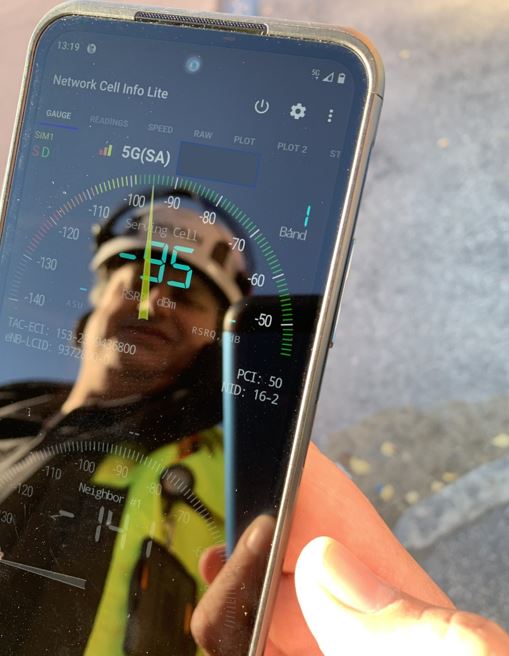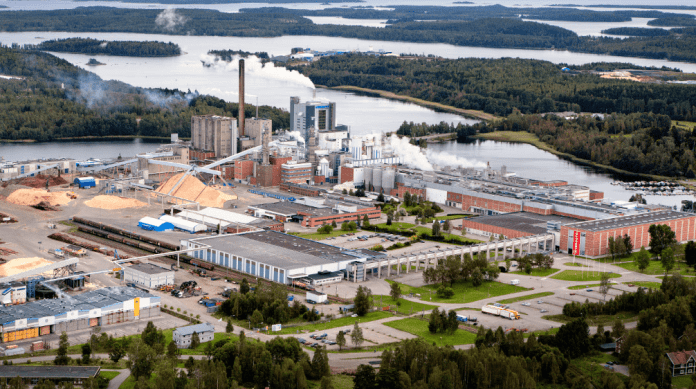Okay, so not a new use case, as such; it is just another connectivity-in-manufacturing case. But still, it is process manufacturing… at a giant paper mill! Swedish pulp and paperboard company Holmen Iggesund has commissioned local system integrator Combitech to deploy a private 5G network at its paper mill in Iggesund, in Gävleborg County on the Baltic Sea coast of Sweden. Its plan is to be “the most efficient, and most reliable, mill in Sweden”, it said.
Holmen Iggesund is part of Swedish forest industry group Holmen, which owns 1.3 million hectares of forest and makes paper and paperboard products for packaging, stationary, and the print industry, plus sawn timber for flooring and sundry construction work. It owns two major paper mills in Iggesund in Sweden and Workington in Cumbria in the UK. Iggesund Mill is already billed as one of the “most advanced” pulp and paperboard mills in the world.

The new private 5G project with Combitech, a major tech and telecoms provider for the Swedish defence sector, is set to cover the entire site at Iggesund. A press statement says it will be the first private 5G network in the country to provide complete indoor and outdoor coverage in the country. The radio and core network providers are not named (nor the spectrum band), but Ericsson is a country-mate, and Nokia worked with it on an early-ish private LTE deployment with Saab. (But we are speculating, just stating the obvious.)
Holmen Iggesund said the new network will help it go “step-by-step” on its developing Industry 4.0 journey. It said: “The network connects the unloading area of the mill with the port of shipment in Skärnäs. This is a first step to connect the entire operations at the Iggesund Mill, and more areas will be included, to secure the position as the most efficient, and most reliable mill in Sweden.”
The press information reads well, and makes plain the first use case is straight connectivity (likely, but speculatively, over LTE) for workers and vehicles, but that there is a strategy to expand into broader manufacturing automation, with a major focus on carbon/energy savings, in line with the company’s CSR promise. It states: “The private 5G network will, as a start, address challenges related to communication and transports between [the mill and the port].”
It goes on: “The network will allow an extremely fast, zero-to-no latency, wireless communication between the different systems connected to the transports. Improved reliability and stellar connectivity make sure Holmen Iggesund runs the smoothest, most secure, and most energy efficient transport operations. Minimising unnecessary transports and consequently reducing the use of fuel, will also make the mill more sustainable.”

Holmen Iggesund has invested “heavily” in its mill energy systems over the last decade, the company said, giving it a headstart (if such a term can be used) on the industrial sector’s broader drive on environmental targets. The work with Combitech has identified, however, that more can be done, and quickly, by bringing new efficiencies to transportation of paper and pulp products between the mill and the port at Skärnäs.
The introduction of LTE/5G affords the company a way to reduce transport emissions through route optimisation and predictive maintenance, it said. “Transport is one of the areas [we] can improve, making the investment in 5G… even more important. Improving transport efficiency and long-term transition to non-fossil are key areas for the future.” The project will develop, it said, to “optimise the entire mill operation going forward”, it added.
The firm flagged the higher security credentials of cellular, as well, compared with local-area Wi-Fi networks. Holmen Iggesund concluded: “This is the first step of a roadmap to make sure Iggesund Mill stays the smartest and most efficient mill in Sweden. And the private 5G network can offer immense possibilities in improving the mill operations in the future.”
Johan Nellbeck, chief executive at Holmen Iggesund, commented: “We… have always been ahead of our time, whether it’s related to reducing carbon footprint or making sure we have the latest technology. This is entirely in line with our strategy to be one of the most efficient and most sustainable mills. To get there, we need the best partners, and with the 5G network together with Combitech, we take a big leap into the future.”
Peder Hägglund, head of technology at Holmen Iggesund, said: “This is just a first [step] to solve day-to-day problem[s]. I am even more excited about what we will do in the future. 5G makes it possible to get mobility for our IT/OT systems, and with [IoT] sensors we can measure and analyse almost anything. With great data comes knowledge [about] what to improve. It could be process stability, quality, security; the sky is the limit.”
Jessica Öberg, chief executive at Combitech, added: “Connecting the Iggesund paperboard Mill with 5G is a very exciting ‘smartification’. We are of course very proud to get this going together with Holmen Iggesund and we look forward to working closely together to identify and implement all the digital services that this network enables.”

